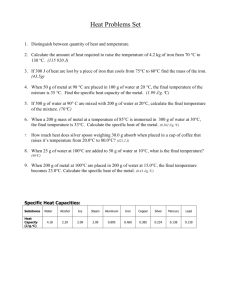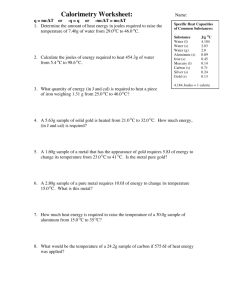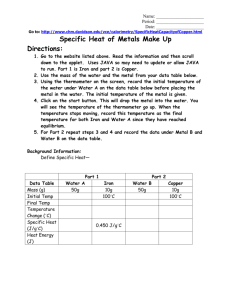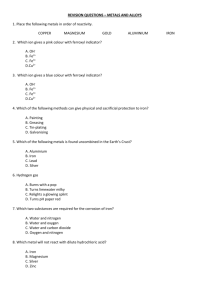Sacred heart Primary * Home Learning Grid
advertisement
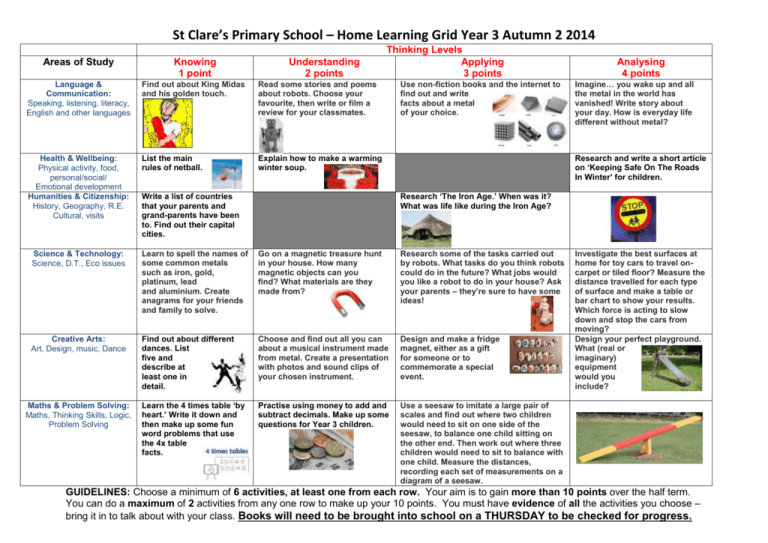
St Clare’s Primary School – Home Learning Grid Year 3 Autumn 2 2014 Areas of Study Knowing 1 point Understanding 2 points Language & Communication: Speaking, listening, literacy, English and other languages Find out about King Midas and his golden touch. Read some stories and poems about robots. Choose your favourite, then write or film a review for your classmates. Health & Wellbeing: Physical activity, food, personal/social/ Emotional development Humanities & Citizenship: History, Geography, R.E. Cultural, visits List the main rules of netball. Explain how to make a warming winter soup. Thinking Levels Applying 3 points Use non-fiction books and the internet to find out and write facts about a metal of your choice. Imagine… you wake up and all the metal in the world has vanished! Write story about your day. How is everyday life different without metal? Research and write a short article on ‘Keeping Safe On The Roads In Winter’ for children. Research ‘The Iron Age.’ When was it? What was life like during the Iron Age? Write a list of countries that your parents and grand-parents have been to. Find out their capital cities. Science & Technology: Science, D.T., Eco issues Learn to spell the names of some common metals such as iron, gold, platinum, lead and aluminium. Create anagrams for your friends and family to solve. Go on a magnetic treasure hunt in your house. How many magnetic objects can you find? What materials are they made from? Research some of the tasks carried out by robots. What tasks do you think robots could do in the future? What jobs would you like a robot to do in your house? Ask your parents – they’re sure to have some ideas! Creative Arts: Art, Design, music, Dance Find out about different dances. List five and describe at least one in detail. Choose and find out all you can about a musical instrument made from metal. Create a presentation with photos and sound clips of your chosen instrument. Design and make a fridge magnet, either as a gift for someone or to commemorate a special event. Learn the 4 times table ‘by heart.’ Write it down and then make up some fun word problems that use the 4x table facts. Practise using money to add and subtract decimals. Make up some questions for Year 3 children. Use a seesaw to imitate a large pair of scales and find out where two children would need to sit on one side of the seesaw, to balance one child sitting on the other end. Then work out where three children would need to sit to balance with one child. Measure the distances, recording each set of measurements on a diagram of a seesaw. Maths & Problem Solving: Maths, Thinking Skills, Logic, Problem Solving Analysing 4 points Investigate the best surfaces at home for toy cars to travel oncarpet or tiled floor? Measure the distance travelled for each type of surface and make a table or bar chart to show your results. Which force is acting to slow down and stop the cars from moving? Design your perfect playground. What (real or imaginary) equipment would you include? GUIDELINES: Choose a minimum of 6 activities, at least one from each row. Your aim is to gain more than 10 points over the half term. You can do a maximum of 2 activities from any one row to make up your 10 points. You must have evidence of all the activities you choose – bring it in to talk about with your class. Books will need to be brought into school on a THURSDAY to be checked for progress.
